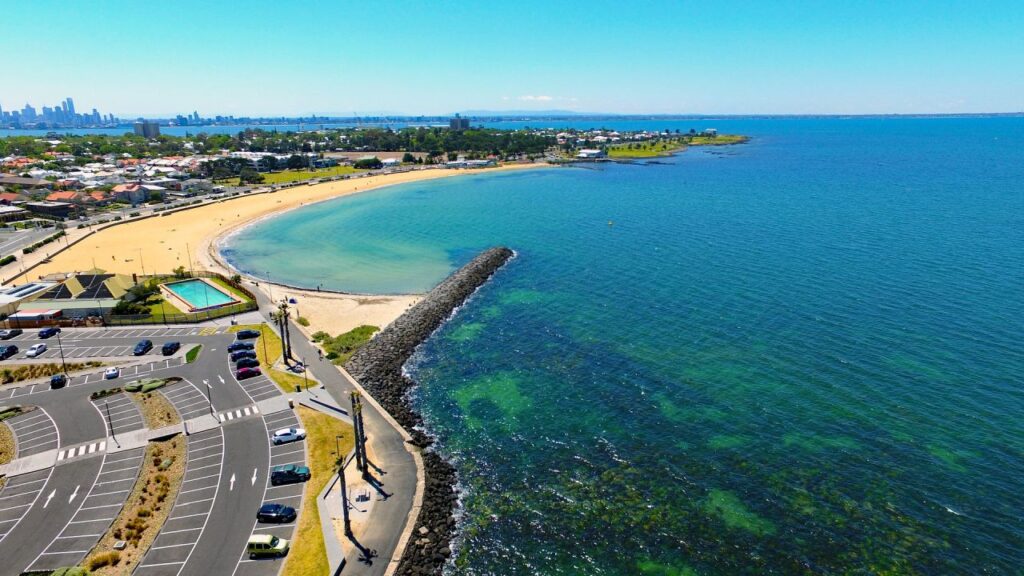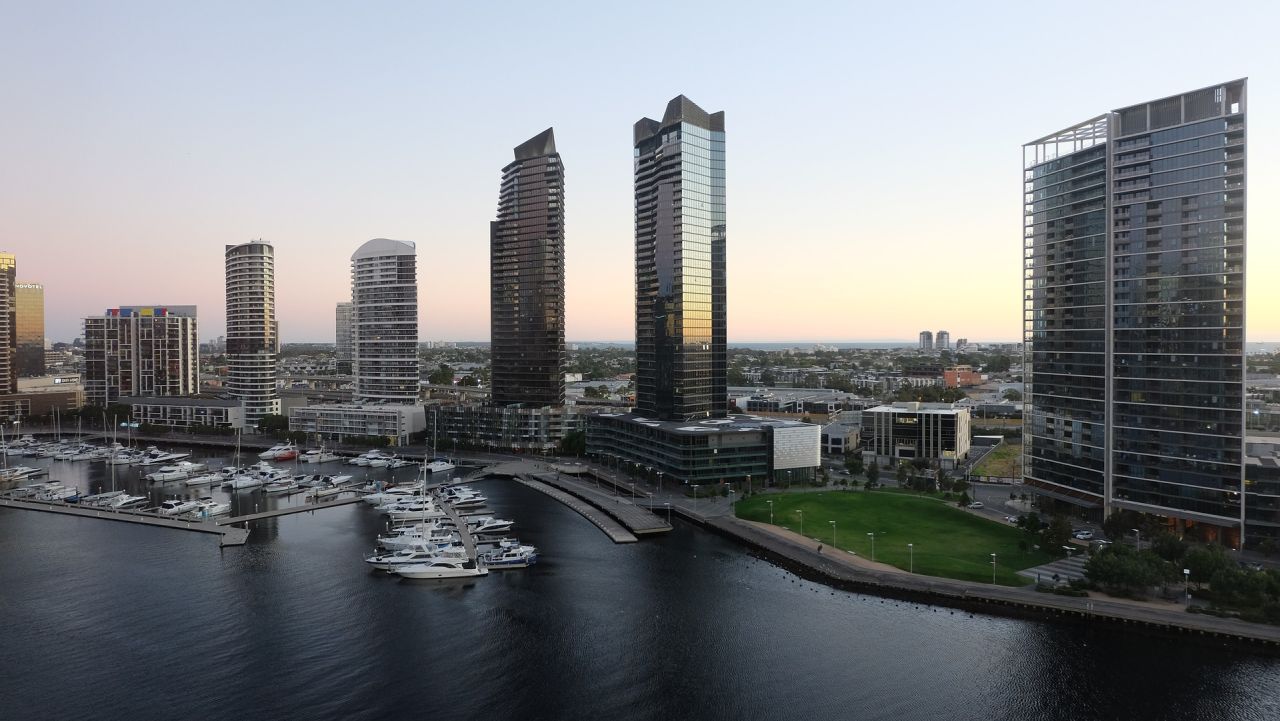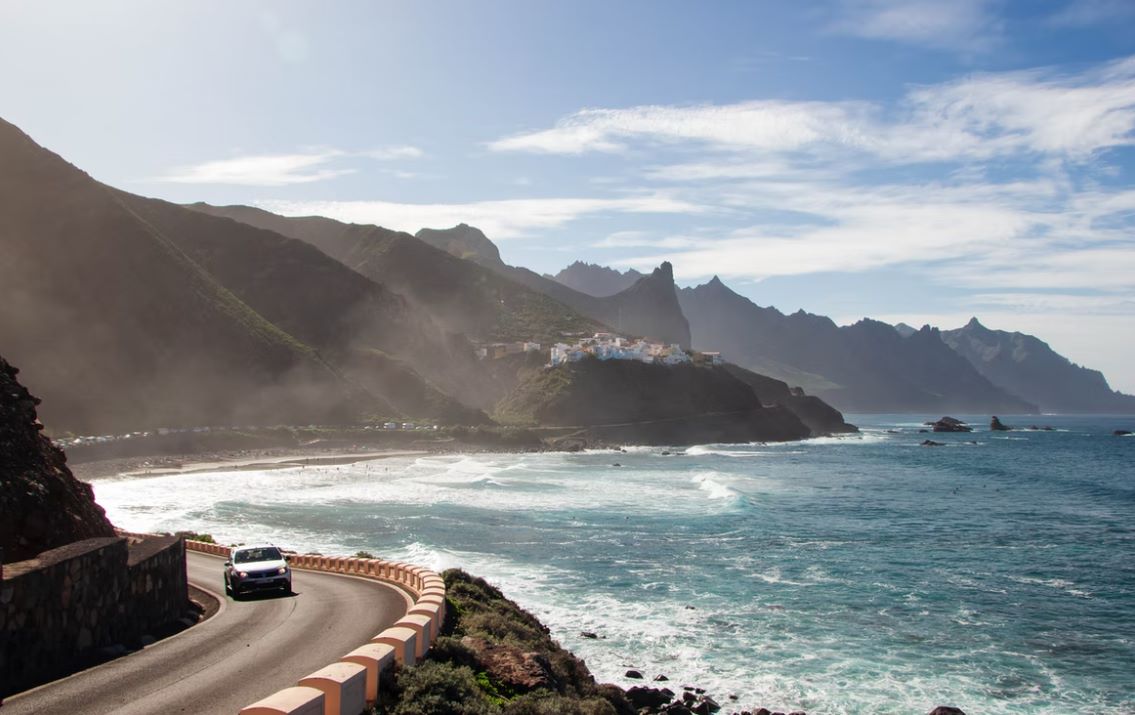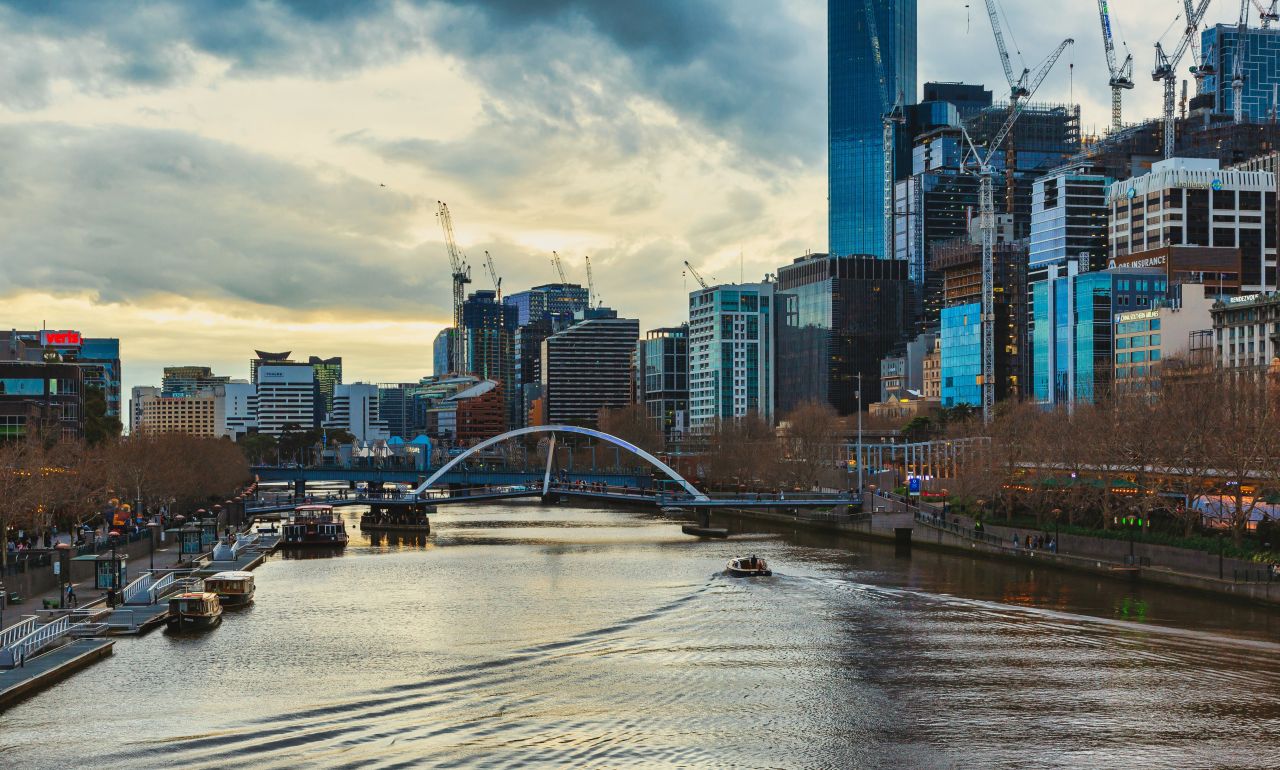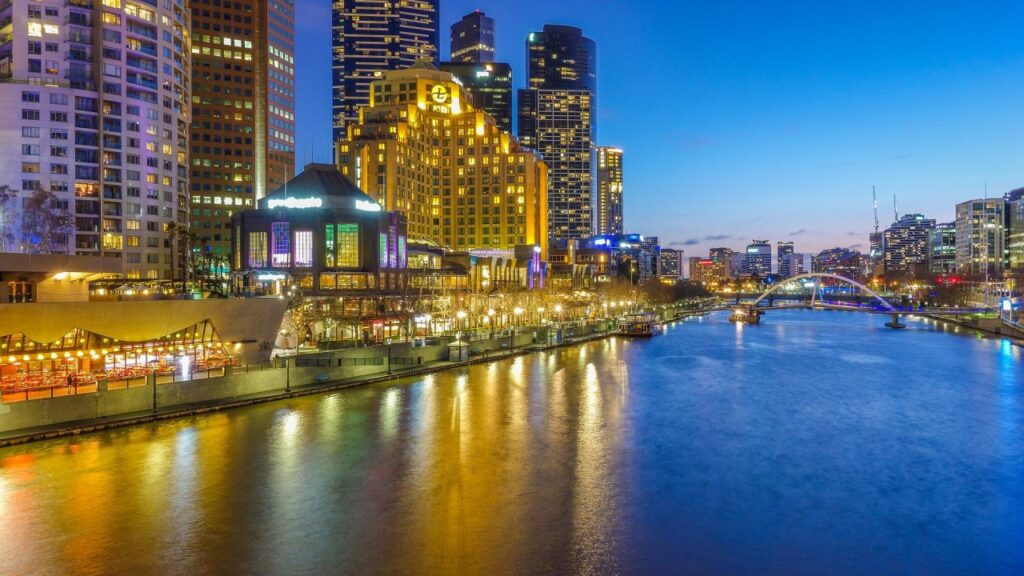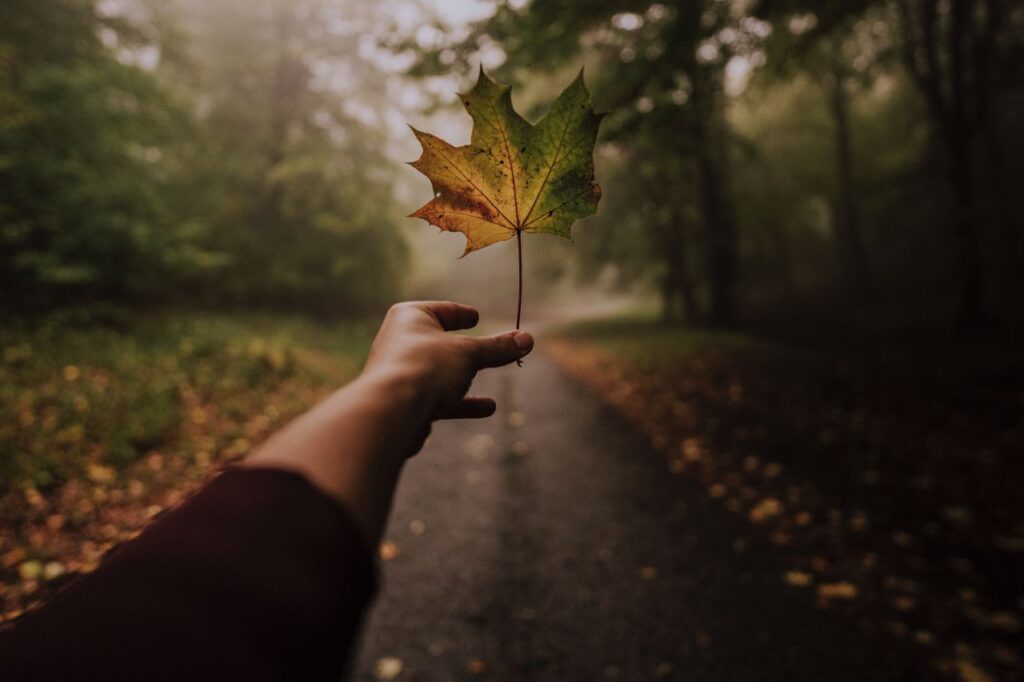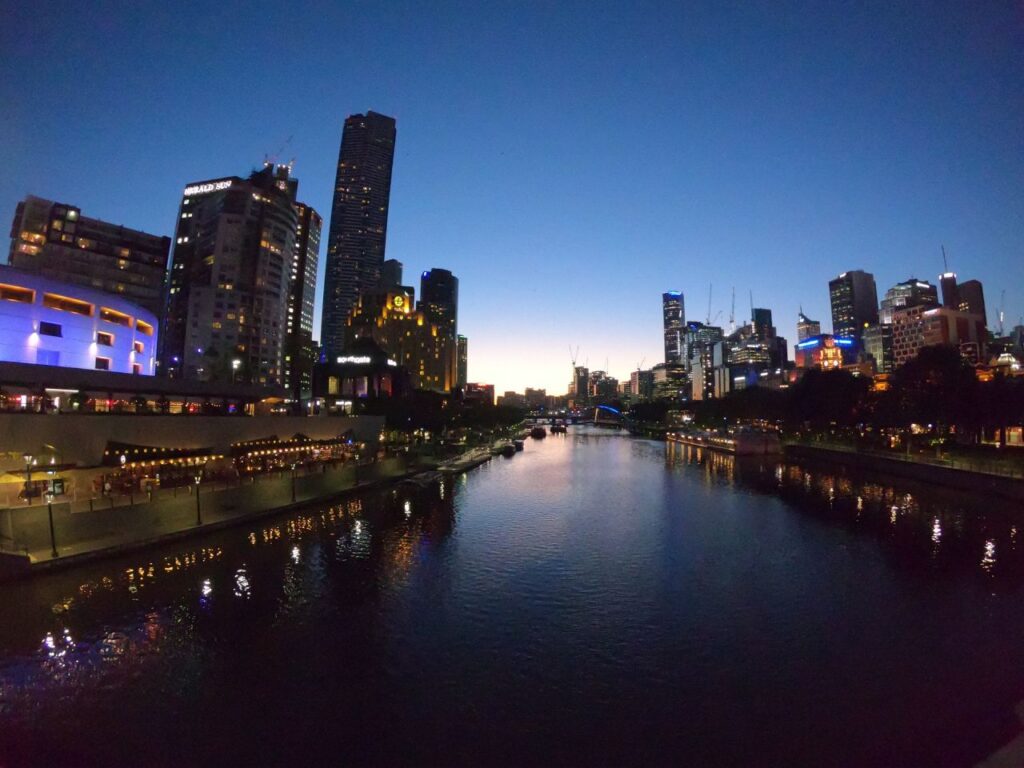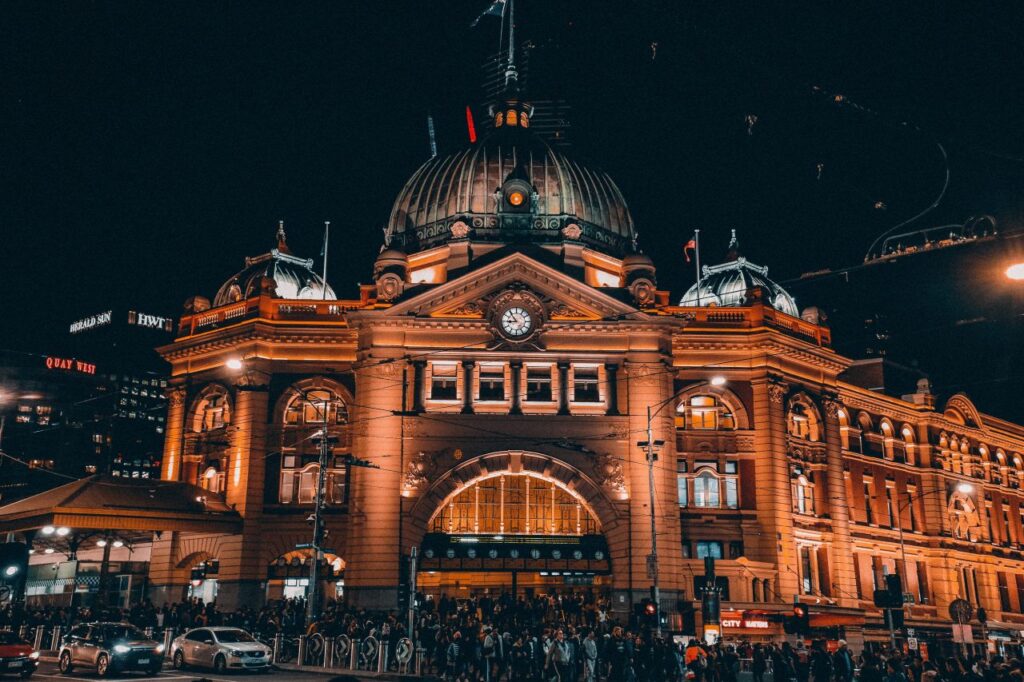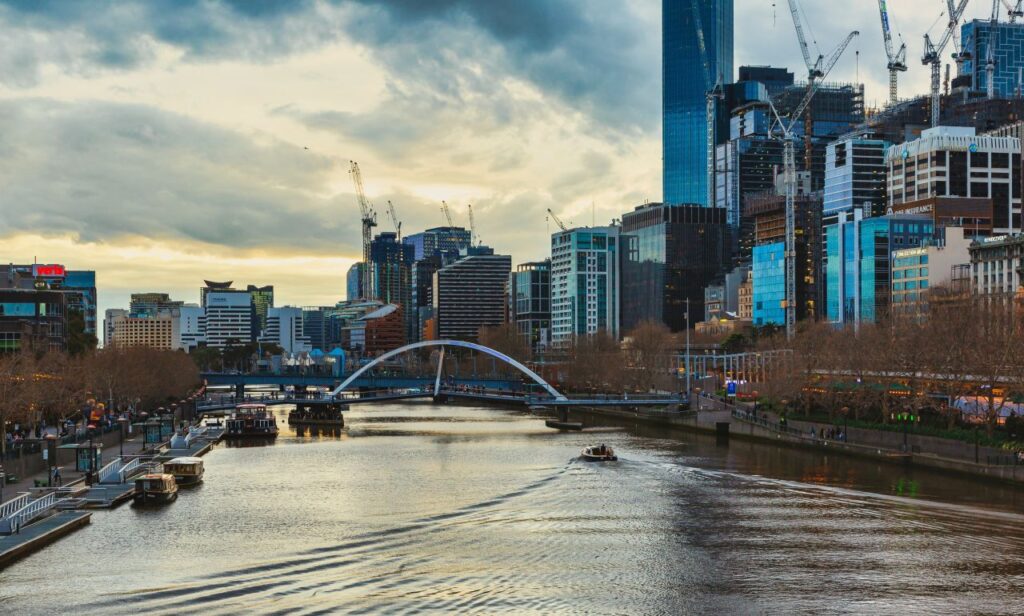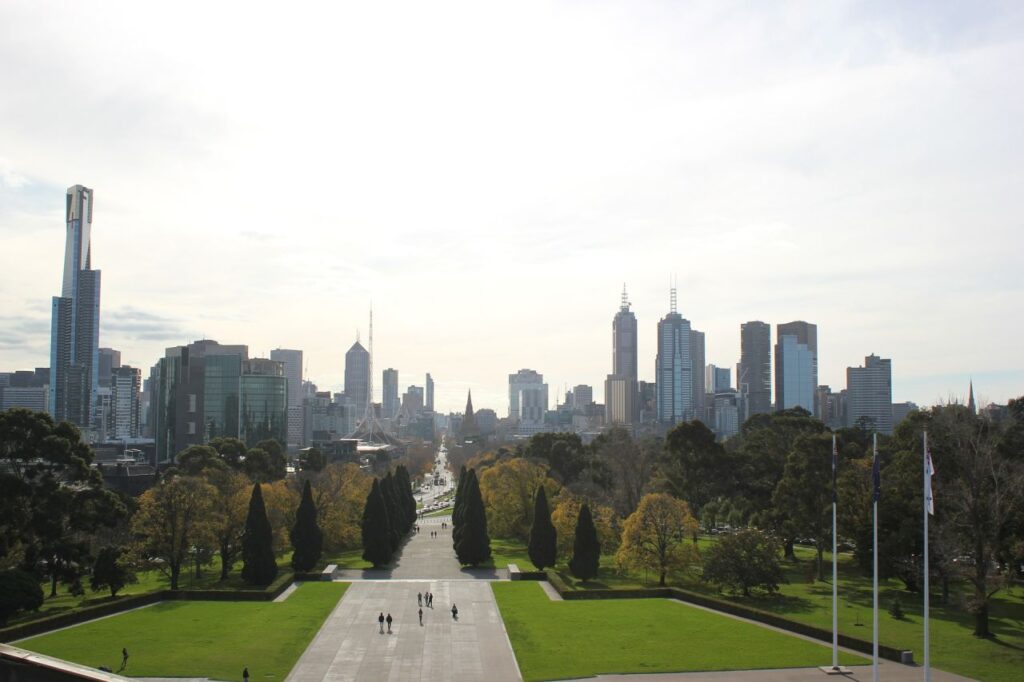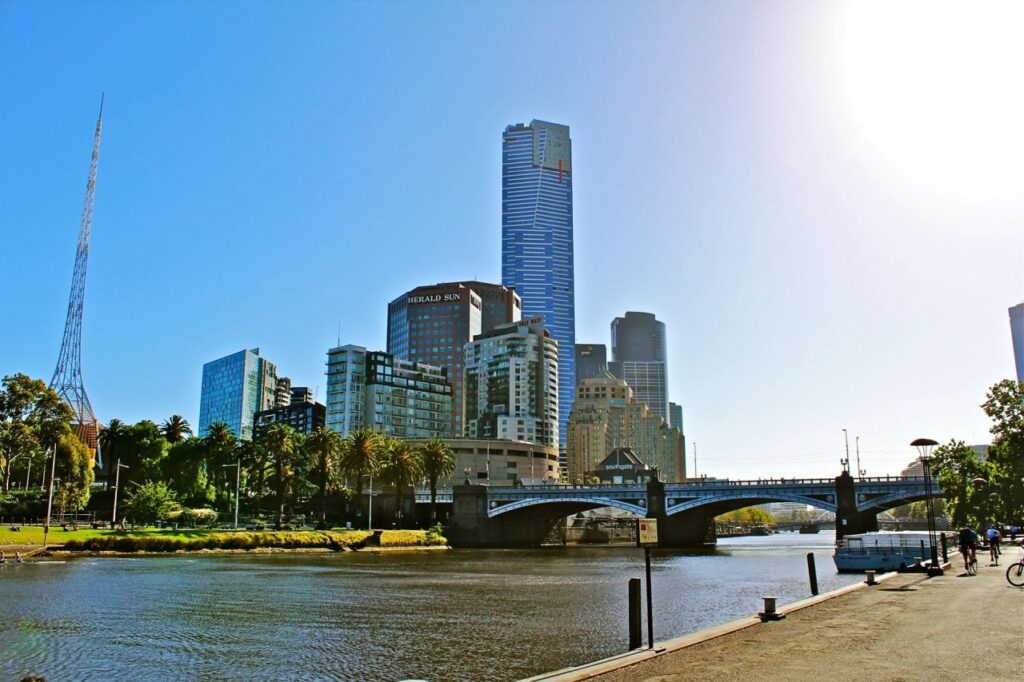The Great Ocean Road is, without a doubt, one of the most famous coastal roads in the world. It reaches a total length of 243 kilometres from Torquay to Warrnambool on the southeastern coast of Australia. World War I veterans built this thoroughfare between 1919 and 1932 and dedicated it to their fallen friends.
Australia's Great Ocean Road is one of the most beautiful drives in the world, featuring pristine beaches, lush forests, and spectacular vistas. Explore the best of what the Great Ocean Road has to offer in terms of sights, eats, sleeps, and rides.
From Allansford to Torquay, along the coast, lies the Great Ocean Road, which has become a must-see for visitors to the area. We Victorians may be a bit partial, but the Great Ocean Road truly is a stunning stretch of coastline.
Awe-inspiring limestone cliffs blaze orange in the sun as the Southern Ocean rages, and tiny seaside villages are hospitable and friendly. Old-growth temperate rainforests border the shoreline where world-class surf breaks can be discovered.
The Great Ocean Road is perfect for a vacation of any kind, whether you want to kick back and relax or go on an adventure. True Melburnians that we are, we've made it a point to see many of the Great Ocean Road's most well-known sights over the years, and as a consequence, we feel prepared to put up this in-depth guide to one of Victoria's most treasured regions.
Many of the coast's attractions are within a day's drive of each other and can be visited using a car and a few days' time, despite the fact that there are seemingly endless things to do there.
Great Ocean Road Destination
Among the 10 best things to do on the Great Ocean Road are spotting koalas or kangaroos, going on a treetop hike, visiting a dramatically-sited lighthouse, and exploring the wreckage of an ancient shipwreck.
Experience the Great Ocean Road on a road trip
The Great Ocean Road is practically begging to be driven; with its winding roads and breathtaking vistas, the journey itself is the main draw.
Even while the entire 243-kilometer stretch between Torquay and Allansford is beautiful and diverse, our favourite part is the section between Lorne and Apollo Bay, which features views that are unbelievably epic the whole way.
Make sure your phone batteries are charged and take advantage of the scenic turnouts so you can capture every breathtaking turn on film. In case you find yourself without a means of transportation, it is recommended that you look into hiring a vehicle service. Both the schedule and the driving guide for our Great Ocean Road adventure will be available soon.
Beech Forest
It may seem like the Great Ocean Road is all about beaches and cliffs, but if you drive 15 minutes past Wongarra and turn inland at Skenes Creek, you'll find yourself in a beautiful forest of gigantic Californian Redwood trees, commonly known as Beech Forest. Take a leisurely stroll among the giant trees, enjoy a picnic, and take in the surreal scenery.
Go Koala-Spotting Along The Kennett River
If you wish to see wild koalas, you must visit the Kennett River area. From Lorne, the Grey River Reserve is about a 40-minute drive past Wye River. You can see koalas in the eucalyptus trees along Grey River Road if you look closely. It is possible to spot these adorable marsupials all over town, especially if you keep your eyes peeled in the sky.
Blue Lake, Mt Gambier
Those travelling from Adelaide to Melbourne by car should stop in Gambier. It is a natural wonder along The Great Ocean Road, however it is not located on the road itself. The Lake is a brilliant blue during the summer months but a muted blue-gray the rest of the year. Location in a massive volcanic crater, the lake's vibrant hues will astound you.
Kennett River
To fulfil your dream of witnessing a koala in its natural habitat, you've come to the correct location. If you head south-west from Lorne along the Great Ocean Road, you'll reach the community of Kennett River after around 30 minutes.
Due to the high concentration of these natural species, this area has earned a reputation as a prime location from which to view koalas in the blue gums that flank the main road. Keep your eyes peeled as you cruise the Koala Walk for our adorable buddies snoozing in the trees.
Surf City Torquay
Torquay is well-known for being the gateway to the Great Ocean Road and the birthplace of two major Australian surf brands, Rip Curl and Quicksilver. In 1969, two local surfers launched what would become two of the most well-known surf companies in the world from their backyards.
The two corporations both maintain significant retail presences in the Surf City area of Torquay. The retail centre houses other stores selling various well-known labels, such as Oakley, Billabong, Patagonia, and many more.
Be sure to make this your first stop on the Great Ocean Road if you're in the market for some new board shorts, a surfboard, a wetsuit, a baseball cap, or any other surf-related apparel. But the best thing you can take away from a trip down the Great Ocean Road is your improved wave-catching abilities. A 2-hour surfing session at Anglesea will provide you with a thorough introduction to the sport, access to rental gear, and helpful hints for riding your first wave.
This memorable experience is perfect for everyone above the age of 8, including adults and teenagers. Classes are offered in both Anglesea and Torquay.
Flying Through the Sky of an Otway Rainforest
While in Weeaproinah, you can choose from a number of exciting activities that take place high in the trees. Visitors to the Otway rainforest can get a bird's-eye view of the area from the Treetop Walk. Take a thrilling Zip Line trip if you're in the mood for some excitement.
With a length of 600 metres and a height of 35 metres, the Treetop Walk easily takes the title of longest and tallest in the world. From Apollo Bay, the hike will take about one hour.
Great Ocean Walk Hike
A hike along the Great Ocean Walk is a fantastic way to take in the beauties of this famous stretch of shore. Travel over 100 kilometres of the trail at your own pace, passing by beautiful beaches, high cliff tops, and dense forests. In order to get from the 12 Apostles to Apollo Bay by foot, you should plan on spending about 8 days.
Snap a Pic near the Great Ocean Road Memorial Arch
Why bother visiting the Great Ocean Road if you aren't going to take a picture of the Great Ocean Road sign? That's what they think, at least. The Great Ocean Road's most photographed and famous landmark is the wooden arch at its beginning, which was created to honour the 3,000 World War I veterans who worked on the road by hand between 1919 and 1932.
To the left of the arch is a parking lot where you can leave your vehicle, and there is room to pull over to the side of the road to take pictures. However, during peak times, the area can become extremely congested, therefore caution is advised.
Bell’s Beach
Visit Bell's Beach to see the surfers in action once you've gathered all the necessary equipment and read up on the sport. Bell's Beach is a world-class surfing destination, and it is often considered to be one of the best beaches in Australia.
You can access the beach, but I wouldn't want to spend much time there. You're probably here to surf or at least watch other people do so.
Hopetoun Falls
The Great Ocean Road is lined with lush, verdant forests, each of which is home to its own unique set of waterfalls. If you're looking for a photogenic waterfall not far from Beech Forest, try Hopetoun Falls. Admire it from afar, or take a stroll through the ferns of the forest, and take in the sight and sound of the mighty 30-meter falls plunging into the stream below.
Cumberland River And Cumberland Falls
For those who aren't afraid of a little river crossing and rock scrambling, this path near Lorne is ideal. Taking a break from the exhausting three-hour return journey to swim in the peaceful waters is well worth the trouble. Marvel at the towering cliffs that flank this river valley as you go.
Gibson Steps
The area is named after Hugh Gibson, an early settler who cut the stairs into the cliff face. The massiveness of the limestone pillars and cliff faces in this area is best appreciated by visiting Gibson Steps. Parking is available at both the 12 Apostles and Gibson Steps. From the former, you walk over two kilometres back to the kiosk, but from the Gibson Steps parking lot, you travel only fifty metres.
Discover The Shipwreck Coast
Located in the Southern Ocean, Tasmania is the last Australian territory before Antarctica and is noted for its severe currents and surf due to its exposed location. Between Cape Otway and Port Fairy, along the 130-kilometer stretch of Great Ocean Road known as the Shipwreck Coast, some 700 ships and their crews met their fate in the late 19th and early 20th centuries. Many of the early European immigrants who arrived to colonial Australia in pursuit of gold or pastures never made it out of the continent. It's easy to see how the turquoise seas can totally swallow and smash ships in bad weather, despite the fact that the environment is harsh and beautiful on bright days when the waves crash against the high sandstone cliffs.
Matthew Flinders, a British explorer, said that he had "seldom encountered a more terrifying tract of shoreline."
Nowadays, tourists may safely explore the Shipwreck Coast on land, where they can take in sights like Loch Ard Gorge and the shipwrecks at Wreck Beach, Apollo Bay, and other locations.
Childers Cove
For fans of the Twelve Apostles, Childers Cove is a must-see. Limestone cliffs, the tallest of which soar up to 70 m (229.6 ft), are scattered along the coast just metres from the white sand beach. Childers Cove, which resembles the more famous 12 Apostles but has less tourists, is a hidden gem on Australia's Great Ocean Road. So go while the tide is low and bring your camera.
Take In The Majestic 12 Apostles
When it comes to the Great Ocean Road's top attractions, the 12 Apostles are without a doubt the most visited landmark. Though only eight of the original twelve limestone stacks remain (four were lost to erosion and fell into the sea), this natural wonder is still worth seeing in all its glory.
The stacks were a part of the mainland more than 20 million years ago. These stacks are all that's left of the shoreline that was eroded by wind and sea over time. A boardwalk runs the length of the area, providing access to some of the best vantage spots from which to take pictures of the Apostles and the beautiful coastline beyond.
The sunrise and sunset are breathtaking, but if you're a photographer or just want to avoid the hordes of people that flock here during the summer, you should really be here early. Birdsong is lovely at this time of year, and the water is considerably more tranquil.
Visit The Loch Ard Gorge
One of the most popular destinations along the Great Ocean Road is the Loch Ard Gorge, which is only a few minutes' drive from the famous 12 Apostles and offers breathtaking views of the eroding cliffs that almost completely enclose the beautiful beach below.
The scenery alone would be reason enough to go, but an incredible true story of survival that occurred here centuries ago gives the area an air of mystery and wonder. On June 1, 1878, the iron-hulled ship Loch Ard ran aground at the base of neighbouring Muttonbird Island after its crew became disoriented and lost their way in a thick soupy fog.
Two people made it off the ship alive: a wealthy youngster named Eva Carmichael who had come with her family to start a new life in the colonies, and a young ship's apprentice named Tom Pearce. Thanks to an overturned lifeboat, Tom was able to swim to shore, where he saw an unconscious Eva floating at the gorge's mouth. Back in the open water, he put up a heroic struggle for an hour to bring her to safety.
Until Tom could climb the sandstone cliffs to the nearby Glenample Station, they hid out in this cave. Though it's hard to see the event unfolding or imagine a young Tom having the confidence to climb the eroding and unstable 11m high ochre cliffs, the canyon is fascinating to explore today, especially from the beach.
Visit the beach and the cave where they took refuge from the waves, take in the sights from the main vantage point, learn about the area's history at Loch Ard Cemetery, or take a detour to the left to the Tom and Eva lookout point.
Visit Sherbrook River
The point where the winding Sherbrook River finally reaches the Southern Ocean is where nature's untamed, overpowering beauty can be experienced to its fullest extent, but it is present throughout the region.
The bay is surrounded by cliffs, and the waves, which may reach heights of twelve feet, pound the cliffs and crash with the force of lightning on the sandy shoreline below.
Walking out along the outcrop of limestone is possible, but you should use extreme caution because tremendous freak waves and massive sprays can appear at any time. As a result, it's best to keep your distance from the cliff's edge. The Thunder Cave and Sherbrook River are both easily reached from the same parking lot. The path is tarmacked, making it an easy and well-maintained stroll down.
Flagstaff Hill
Native species at Tower Hill Wildlife Reserve and the annual migration of thousands of whales along Logan's Beach have made Warrnambool, located on the Great Ocean Road, famous for their natural beauty. However, the local flora and fauna are not the only attractions in this coastal community.
You may learn about the history of the area and its nickname, the Shipwreck Coast, at the Flagstaff Hill Maritime Museum and Village. Explore sunken ships at sea, experience village life as it was in the early 1900s, and examine priceless artefacts.
Look Out From The Grotto
The Grotto, a beautiful sinkhole formed by the weathering of the surrounding limestone cliffs, is a must-see for any visitor to Australia's Great Ocean Road. The receding cliffs have created a sort of window through which the tranquil rock pool (it could pass for a spa) and the churning sea in the background can be admired. The descent to the cave is down some very steep stairs, which should be manageable for anyone with average stair-climbing skills.
Erskine Falls
Although there are several other Great Ocean Road waterfalls in the Lorne vicinity, our favourite was the walk to Erskine Falls. Even though we were there during a dry season, there was still enough water to make the falls a spectacular sight.
From the parking lot, the hike to the overlook of the falls takes around 5 minutes. Take the youngsters on an exciting experience by descending the roughly 250 steps to the lower lookout for a closer look at the waterfall. Due to the low water levels, we were able to climb down the side of the waterfall and explore the pool below. The kids will love it!
See The Thunder Cave
Everywhere you go along the Great Ocean Road, you'll be able to see the strength of the area, but in the Thunder Cave, you'll be able to hear it as well. When the ocean surges into the Thunder Cave, a narrow cave and gorge, it folds back on itself and the cave walls with a resounding boom, evoking the sound of thunder. There isn't much to do at the overlook, but watching the waves build and listening for thunder is captivating nonetheless.
Parking at the Loch Ard Gorge overlook allows visitors easy access to the Thunder Cave. From the 12 Apostles to the Umpherston Sinkhole and beyond, the Great Ocean Road is lined with captivating natural wonders and magnificent beaches.
A lesser-known but equally impressive natural attraction is Thunder Cave, which is only a short drive from Lord Arch Gorge. This cave, which took 20 million years to develop, is another example of Mother Nature's masterful creations and is well worth seeing. For those who are curious about the origins of the name "Thunder Cave," a careful ear will provide the answer in a moment.
Point Addis Marine National Park
There are many stunning vistas along Australia's Great Ocean Road, but the seascape near Point Addis National Marine Park stands out. The craggy cliffs of the Koori Cultural Walk are reminiscent of the Jurassic period, and offer spectacular views.
In case you haven't done so earlier, this is where you'll feel the freedom of driving on a highway for the first time. The nicest part is that you'll probably be able to see nothing on the horizon but kangaroos and surfers in the distance.
Conclusion
Australia's Great Ocean Road is one of the most beautiful drives in the world, featuring pristine beaches, lush forests, and spectacular vistas. It reaches a total length of 243 kilometres from Torquay to Warrnambool on the southeastern coast of Australia. World War I veterans built this thoroughfare between 1919 and 1932 and dedicated it to their fallen friends. The Great Ocean Road is practically begging to be driven with its winding roads and breathtaking vistas, the journey itself is the main draw. Among the 10 best things to do on the road are spotting koalas or kangaroos, visiting a treetop hike, and exploring the wreckage of an ancient shipwreck.
Content Summary:
- The Great Ocean Road is, without a doubt, one of the most famous coastal roads in the world.
- It reaches a total length of 243 kilometres from Torquay to Warrnambool on the southeastern coast of Australia.
- World War I veterans built this thoroughfare between 1919 and 1932 and dedicated it to their fallen friends.
- Australia's Great Ocean Road is one of the most beautiful drives in the world, featuring pristine beaches, lush forests, and spectacular vistas.
- Explore the best of what the Great Ocean Road has to offer in terms of sights, eats, sleeps, and rides.
- From Allansford to Torquay, along the coast, lies the Great Ocean Road, which has become a must-see for visitors to the area.
- We Victorians may be a bit partial, but the Great Ocean Road truly is a stunning stretch of coastline.
- Awe-inspiring limestone cliffs blaze orange in the sun as the Southern Ocean rages, and tiny seaside villages are hospitable and friendly.
- Old-growth temperate rainforests border the shoreline where world-class surf breaks can be discovered.
- The Great Ocean Road is perfect for a vacation of any kind, whether you want to kick back and relax or go on an adventure.
- True Melburnians that we are, we've made it a point to see many of the Great Ocean Road's most well-known sights over the years, and as a consequence, we feel prepared to put up this in-depth guide to one of Victoria's most treasured regions.
- Many of the coast's attractions are within a day's drive of each other and can be visited using a car and a few days' time, despite the fact that there are seemingly endless things to do there.
- Great Ocean Road Destination Among the 10 best things to do on the Great Ocean Road are spotting koalas or kangaroos, going on a treetop hike, visiting a dramatically-sited lighthouse, and exploring the wreckage of an ancient shipwreck.
- The Great Ocean Road is practically begging to be driven; with its winding roads and breathtaking vistas, the journey itself is the main draw.
- Even while the entire 243-kilometer stretch between Torquay and Allansford is beautiful and diverse, our favourite part is the section between Lorne and Apollo Bay, which features views that are unbelievably epic the whole way.
- Make sure your phone batteries are charged and take advantage of the scenic turnouts so you can capture every breathtaking turn on film.
- In case you find yourself without a means of transportation, it is recommended that you look into hiring a vehicle service.
- Both the schedule and the driving guide for our Great Ocean Road adventure will be available soon.
- Beech Forest It may seem like the Great Ocean Road is all about beaches and cliffs, but if you drive 15 minutes past Wongarra and turn inland at Skenes Creek, you'll find yourself in a beautiful forest of gigantic Californian Redwood trees, commonly known as Beech Forest.
- Take a leisurely stroll among the giant trees, enjoy a picnic, and take in the surreal scenery.
- If you wish to see wild koalas, you must visit the Kennett River area.
- From Lorne, the Grey River Reserve is about a 40-minute drive past Wye River.
- You can see koalas in the eucalyptus trees along Grey River Road if you look closely.
- It is possible to spot these adorable marsupials all over town, especially if you keep your eyes peeled in the sky.
- Those travelling from Adelaide to Melbourne by car should stop in Gambier.
- It is a natural wonder along The Great Ocean Road, however it is not located on the road itself.
- The Lake is a brilliant blue during the summer months but a muted blue-gray the rest of the year.
FAQs About Great Ocean Road in Melbourne
This is a great photo op spot, and this is one of the most photographed spots along the Great Ocean Road. Continue from this point as there are tons of Great Ocean Road attractions to come. Lorne is the closest town from the arch and a great spot to grab lunch at Bottle of Milk, use the facilities, and continue towards Kennett River.
The Great Ocean Road begins a 90-minute drive from Melbourne's city centre. It spans 400 kilometres (249 miles) from Torquay to Nelson on the South Australian border. Victoria's dramatic southwest coastline covers an incredible range of scenery. See the world-famous waves at Bells Beach or laze on the sand at Anglesea.
Torquay Beach. At the official start of the Great Ocean Road, Torquay is an excellent place to get your bearings and soak up some traditional Aussie beach culture at the same time. The first stop should be the helpful Torquay Visitor Information Center.
Renowned for its rugged natural beauty, shipwreck stories, and surfing culture the Great Ocean Road and its frequently changing and dramatic landscapes and views make this 242 kilometre stretch of road Australia's most famous coastal journey.
If you're looking for a gorgeous coastline and some amazing sites to explore, then the Great Ocean Road is definitely worth visiting. Beginning in Torquay and extending all the way down to Allansford ( near Warnambool) along Australia's south-eastern coast.

